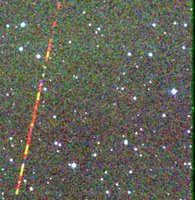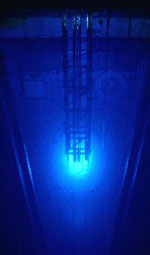 Adrian Bejan
Adrian Bejan, a noted heat transfer researcher, believes that he has found laws that would explain locomotion on the ground, in the air and in water. This is pretty significant since it does not seem obvious on how to connect swimming behavior to walking on the ground. Most of his argument revolves around what he calls
constructal theory which as far as I understand says that nature allows for different shapes to occur as a result of optimizing heat transfer at different scales. That results allows for a clear explanation of
tree like structures for the lungs, veins, trees, roots which has mostly being looked at as being an ad-hoc assumption. This is a also a result that explains why Nature is not made of fractals. In 2000, he showed you could draw a line through meat flies on 747s on the same graph (the x-axis is the mass, the y-axis is their theoretical speed). This time he shows how, given gravity, density of the body, air and water he can fit pretty much all living things in log-log straight lines.

This is very interesting on many levels. Obviously, our brain says it OK when we see shapes that follow these principles:
In the MEMS world, gravity becomes less important compared to Van der Waals forces. Why should normal shapes found at the human scale world be found at these microscales ?

On other planets, such as Europa, where there is an expectation of prospects of life, how does different gravity levels (1/6th of a g) changes the shapes of the living bodies there ? Similarly, while most current spacecrafts look like airplanes or cylinders (rocket parts), is there an optimum shaping mechanism in zero-g, how will future spacecrafts built in space look like ?
Can we make out the muscle structure of dinosaurs from these types of consideration ? and what is the largest animal we could ever find when digging since every year, there is an announcement of finding larger and larger prehistoric animals ?



















 It uses the the high level LUA programming language. This looks like using BASIC on the Sinclair ZX Spectrum computer.
It uses the the high level LUA programming language. This looks like using BASIC on the Sinclair ZX Spectrum computer.

